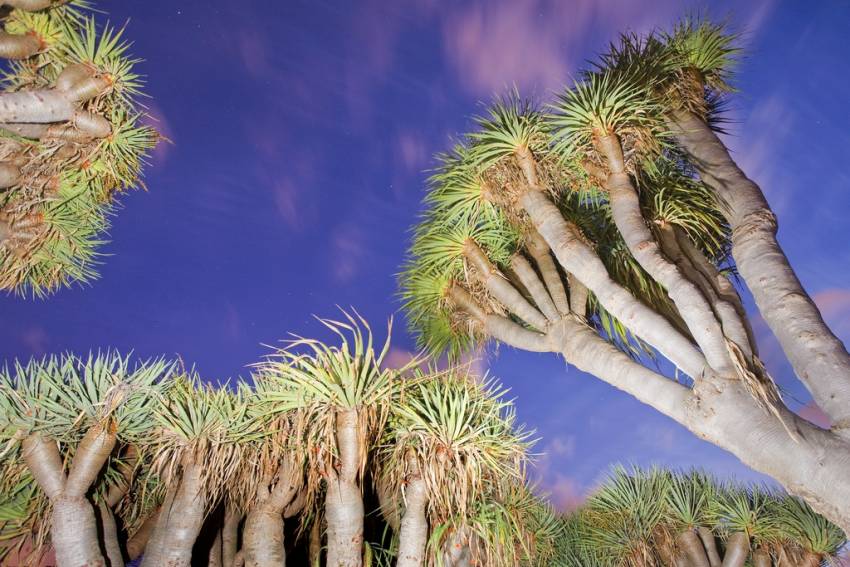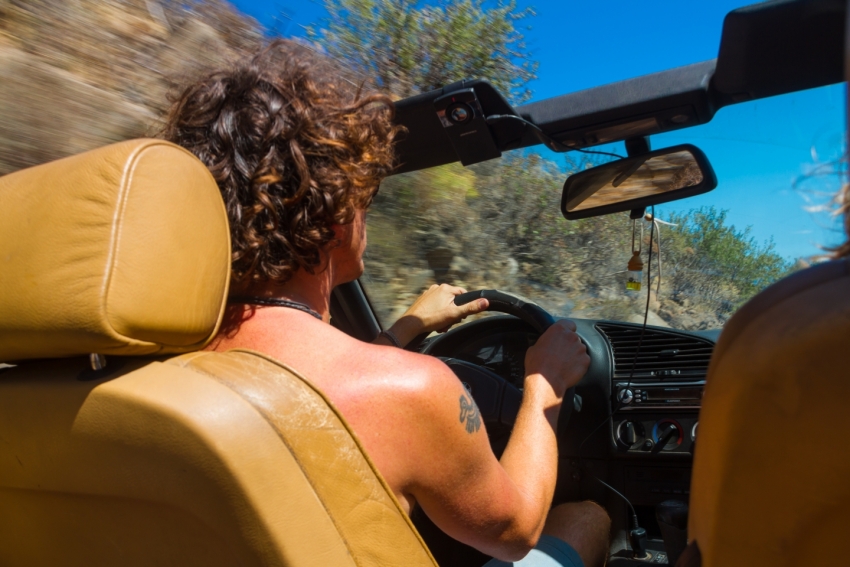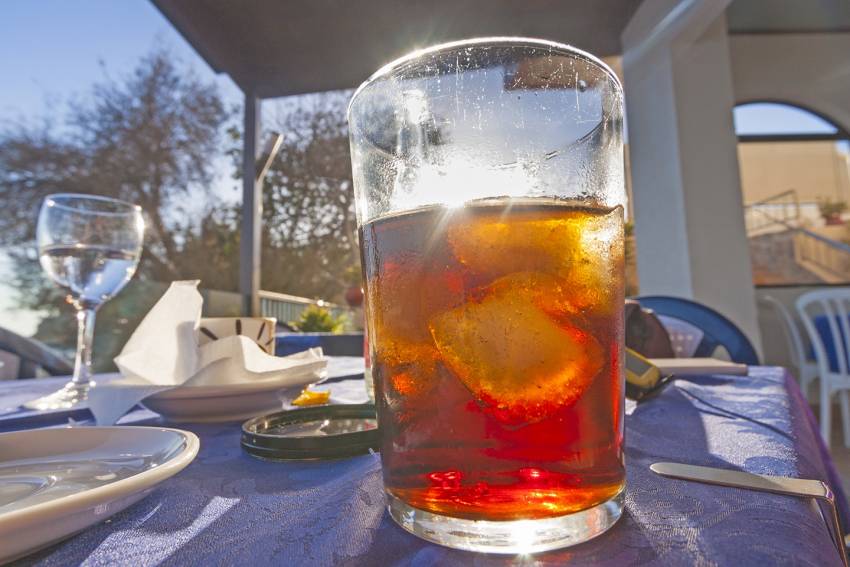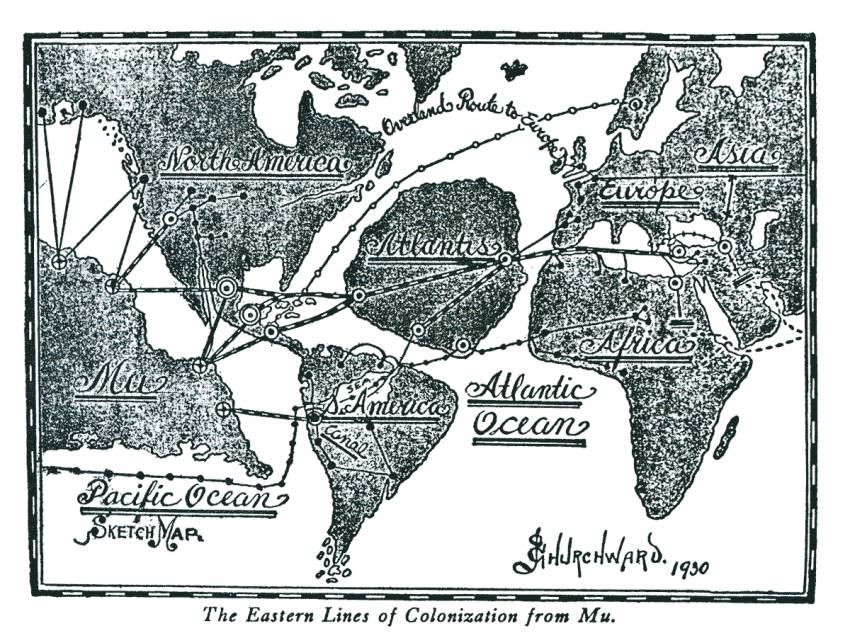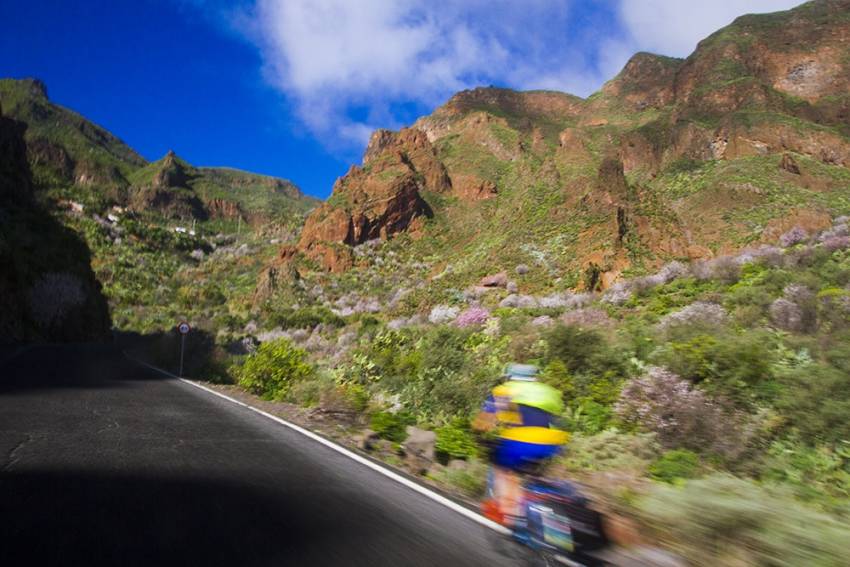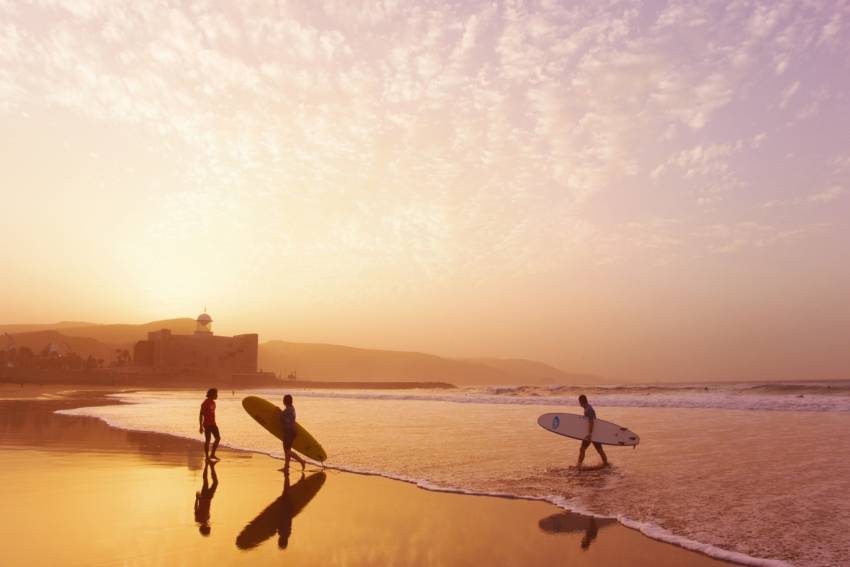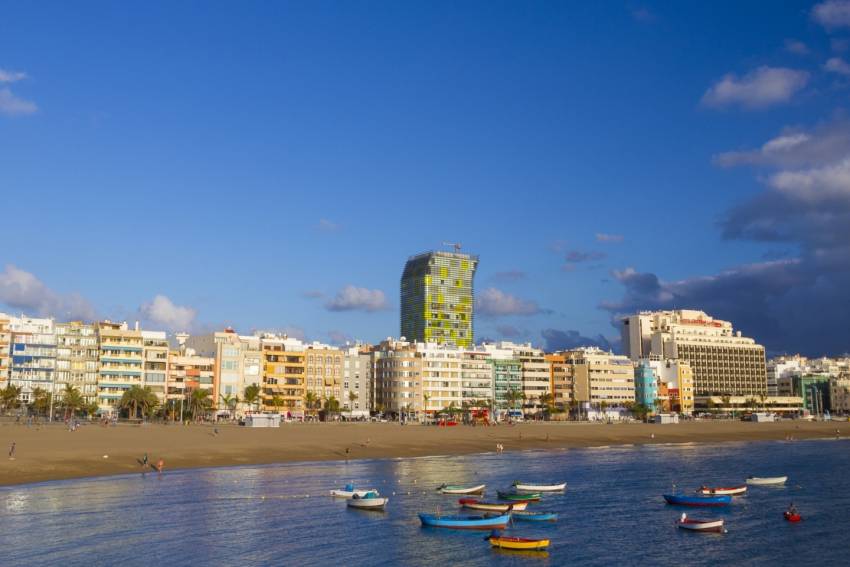Europe's Rarest Tree: The Mysterious Gran Canaria Dragon Tree
Only 70 of the Europe's rarest tree, the Gran Canaria dragon tree (Dracaena tamaranae), survive on the cliffs of the Arguineguin Valley just minutes drive from the island's main resorts.
Top Tips For Hassle-free Car Rental In Gran Canaria
Most people rent a car in Gran Canaria and have no problems at all. Here's our guide to hassle-free rentals and our advice on choosing a good company and avoiding sneaky tricks.
Inter-island Ferry Travel From Gran Canaria
Tenerife is only an hour from Gran Canaria by ferry and you get to south Fuerteventura in less than three hours. Gran Canaria also has direct overnight ferries to Lanzarote and even boats to mainland Spain. While fares for non-residents aren't cheap, the ferries are a great way to get between islands with a car or a large family.
There are three ferry companies in Gran Canaria: Fred Olsen, Armas and Transmediterranea.
The ferry to Tenerife
Ferries to Tenerife run from Puerto de las Nieves in the north west of Gran Canaria and from the capital Las Palmas. Currently the Norwegian-owned Fred Olsen does the Agaete route (one hour to Santa Cruz plus a free 40 minute bus ride from Las Palmas) while Armas does the Las Palmas route (under three hours). Prices are similar for both journeys.
Look out for Fred Olsen deals that include the ferry ride and tickets to the Loro Parque theme park in Tenerife: They can be great value and you have the option to spend a night on the island next door.
The Ferry to Fuerteventura
Fred Olsen and Armas go from Las Palmas to Fuerteventura. The Fred boat is a fast catamaran and does the journey in under three hours while the Armas is a traditional ferry and takes about four hours to get to Morro Jable in south Fuerteventura.
Technically you can do a day trip to Fuerteventura by catching the early Fred Olsen and getting the late ferry back.
The Armas boat also continues on to Fuerteventura's capital Puerto del Rosario which saves you a long drive if you're he.ading north.
The ferry to Lanzarote
Armas runs a night ferry from Las Palmas to Arrecife in Lanzarote four days per week. It leaves at midnight and arrives early in the morning.
The ferry to La Gomera and La Palma
Where there's no direct ferries to these two island Fred Olsen has a bus link between Santa Cruz and its ferry port in south Tenerife at Los Cristianos. The bus is included in the price and there isn't too much waiting before you're on the ferry to the next island.
The ferry to Spain
Armas runs a weekly ferry between Las Palmas and Huelva in southern Spain using a brand new ship. The journey takes 48 hours and departs on Thursdays. Transmediterranea goes weekly from Las Palmas to Cadiz.
For the latest timetables check the Fred Olsen, Armas and Transmediterranea websites.
How To Pour A Drink Gran Canaria Style
The first thing many visitors notice in Gran Canaria bars is the whopping drinks measures. A standard long drink contains between 75 and 100ml of spirits. The standard British single measure isn't enough to wet the ice cubes down here.
The Canary Islands And The Atlantis Legend
When Atlantis sank into the ocean its highest mountains remained as islands. These islands still exist today and are known as the Canary Islands. Their original inhabitants, the Guanches, were the descendants of the last surviving Atlanteans. That's the legend and some people are sticking to it.
Delicious Daily Doughnuts in Gran Canaria
Light and fluffy, golden brown, with a crust of flaky sugar and a hint of lemon: Gran Canaria's doughnuts, called donuts, are a delight.
Cycling in Gran Canaria, By The Expert
The fantastic roads running up the Mogan, Arguineguín and Fataga Valleys used to be deserted apart from local buses and the odd hire car. Head up there nowadays and it's like you took a wrong turn and bumped into the Tour de France. Gran Canaria is firmly on the road biking map and even has its own Tour of Gran Canaria.
Three Little Things You Have To Do In Las Palmas
Las Palmas is a Spanish city with a Canarian accent and a few South American flourishes. It's the only city in Europe where salsa and coconut palms thrive alongside mojo, tapas and vino tinto.
There are two ways to see Las Palmas: Get sore feet seeing the whole place in a day and ending up with a full memnory card and that fuzzy been-there done-that feeling that fades as soon as you move on.
Or, you can do laid-back Las Palmas at its own pace: Instead of charging around take your time doing very little, very thoroughly.
Start by sitting down and drinking a proper cofee
In Las Palmas coffee is made by grown ups instead of baristas and it's all the better for it: Pure bean juice unsullied by pretension, syrups and towers of cream. It comes served in a white porcelain cup with a paper bag of sugar and a tatty old teaspoon. It tastes of coffee.
Order a café solo for a pure espresso, a cortado for an espresso with a dash of milk and a café con leche for a latte. Or go for the rocket fuel option of the leche y leche: A cortado with a shot of condensed milk at the bottom.
In the summer, go for café con hielo. It’s a shot of espresso served with a glass full of ice cubes on the side. You pour the coffee over the ice, swizzle it around a bit and then drink. Simple and delicious.
Every bar and café in Las Palmas has a steam espresso machine so pick one with a good view. The Canteras beachfront, the cobbled streets of Vegueta and any of the palm-shaded squares are splendid spots for a coffee break.
Visit the Museo Canario
In the 1500s Spanish steel met the sticks and stones of the original Canarii inhabitants. It took them 100 years to conquer the Canary Islands, longer than it took to subdue the Aztecs and the Incas.
The unfortunate consequence of this Conquistador trial run was the extinction of Canarii culture. Their languages, religion, folk tales and music were obliterated. All we have left are their mummies and pottery: Meagre remnants of a race that considered themselves kings but didn’t understand the wheel.
The best collection of Canarii artefacts is in the Museo Canario or Canary Museum in Las Palmas’ historical Vegueta barrio. Thankfully, it is compact and not afraid to display plenty of skulls and mummies.
Spend an hour in the museum and then the day wandering around Vegueta. 500 years ago it was besieged by the same people now lying shrivelled in the museum: The only European city ever besieged by stone-age warriors. What if they had overrun the walls? The whole history of Spain and South America would be different.
Learn to Surf
Canteras Beach is three miles long and changes every 100 yards. The north end is all coconut palms, golden sand and clear water. It’s great for sunbathing and snorkelling.
The southern La Cicer end in front of Guanarteme barrio is the surfing end. Twenty years ago it was isolated within the city and overshadowed by fish-canning factories and a power plant. When the town hall shut down the factories and extended the promenade the barrio woke up. Its sullen pot-smoking surfers went to business school and opened surf schools and hostels.
The waves aren’t world class but they are consistent and the right size for beginners. Within a day you can learn the basics of surfing and then hit the bars for an introduction to local rum. Pace yourself because the city doesn’t liven up until midnight and dances until dawn.
There are no flamenco shows or tour guides dressed in traditional costumes in Las Palmas. Like its coffees, it is hot, full of flavour and completely free of pretension. That’s why we love it and you will too.
Las Palmas Guide For Cruise Ship Passengers
Ok, so you've arrived in Las Palmas and you have a few hours to see the city and a bit of Gran Canaria island. Where do you start?
Top Six Scary Gran Canaria Seafood Dishes
Canarian food is famous for its simple, tasty seafood like fried squid rings, delicious prawns and fish stew. However, delve a bit deeper into the local cuisine and some more exotic ocean ingredients and seafood dishes pop up.
Alex Says: 25 years ago I remember watching old women in Lanzarote, wearing huge hats and head scarves, munch their way through a whole bucket of live sea urchins or erizos de mar. The cracked each one open and sucked out the fresh roe, before baiting their fish traps with the shells. The fresh roe is soft and a bit slimy, but tastes fresh and slightly fishy. In Japan, it is highly prized for top quality sushi.
Live Sea Urchins
Sea urchins have become such a problem in parts of the Canaries that the government is trying to get Canarians to eat them more often. The roe, cooked down into a sauce, tastes intensely of the sea. Trouble is, you need to collect a lot of spiny urchins to make a plate of pasta! Each one gives you half a teaspoon of eggs.
Grilled Limpets
Another local speciality is grilled limpets or lapas, served with green mojo sauce (made from garlic, fresh coriander, chilli, vinegar and oil). Limpets are hard to collect because they live on rocks in rough areas and clamp down if you try and dislodge them. The best way to get them is to sneak up and side swipe them with a rock or an iron bar. Cooking limpets is easy as they come in their own little pot: Just add a dash of lemon juice and a teaspoon of green mojo to each upturned limpet, and put them under the grill until the meat comes away from the shells. Limpets are tasty but a little bit chewy, especially if overdone.
Harvesting mussels and limpets is currently restricted in the Canaries, and especially on Fuerteventura, as over-collection was damaging the ecosystem. The limpets you find in small local bars are almost all imported. They still taste the same, and the freezing even makes them slightly tenderer!
Fried Moray Eel
Moray eels are fatty and full of bones, with hardly any meat at all. That doesn't stop Canarians from chopping them up and deep frying the bits until they go crispy. Then they chew up the crisped eel (morena frita) and spit out the bones. Moray eel is very satisfying because it is greasy and tasty, but most people are put off by the bones. Personally, I prefer my moray eels live and wriggling about! They get up to six feet long and make the islands a more attractive Scuba destination.
Octopus Old Clothes
Octopus old clothes (ropa vieja de pulpo) is a stew made from chickpeas, onions, tomatoes and octopus. It is called old clothes stew or "ropa vieja" because legend states that it was first made by a man so poor that he boiled his own clothes. When he took the top of his pot, he found this delicious dish inside instead. When you sit down to a dish of octopus ropa vieja, try not to picture the naked man who first ate it!
Poached Parrotfish
Poached parrotfish (vieja jareada) is an iconic Canarian dish that never gets onto tourist menus because the Canarians keep all the parrotfish to themselves. They are beautiful, multi-coloured animals, with big beaky teeth, that live in shoals and eat crabs and urchins. Their meat is soft and flaky and falls apart unless cooked with care. Viejas are poached whole with onion, peppers and laurel leaves and served with the skin unbroken.
Viejas are traditionally caught from small boats using a glass-bottomed box or "mirafondos", and a cane rod tipped with a dried stingray tail for sensitivity. The fisherman, in a small rowing boat, moves over the rocks until he spots a shoal of viejas through his mirafondos. Then he drops his line, tipped with a long iron hook baited with a small crab amongst the fish. The big hook is essential as viejas can bite through nylon and small hooks with their strong teeth. Once a vieja bites, the fisherman whips it up away from the school quickly so as not to spook the others.
Viejas became very rare because of overfishing but are now staging a big comeback thanks to marine reserves and fishing limits.
Stewed Cuttlefish
Cuttlefish are related to squid but have slightly sweeter meat. In the Canaries, they are stewed until very tender in white wine along with bay leaves and garlic. The dish is called chocos en salsa: It's rich and exceptionally tasty!
Come across any other weird seafood in the Canary Island? Let me know and we'll add it to the list.
Gran Canaria Info recommends:
- Default
- Title
- Date
- Random

